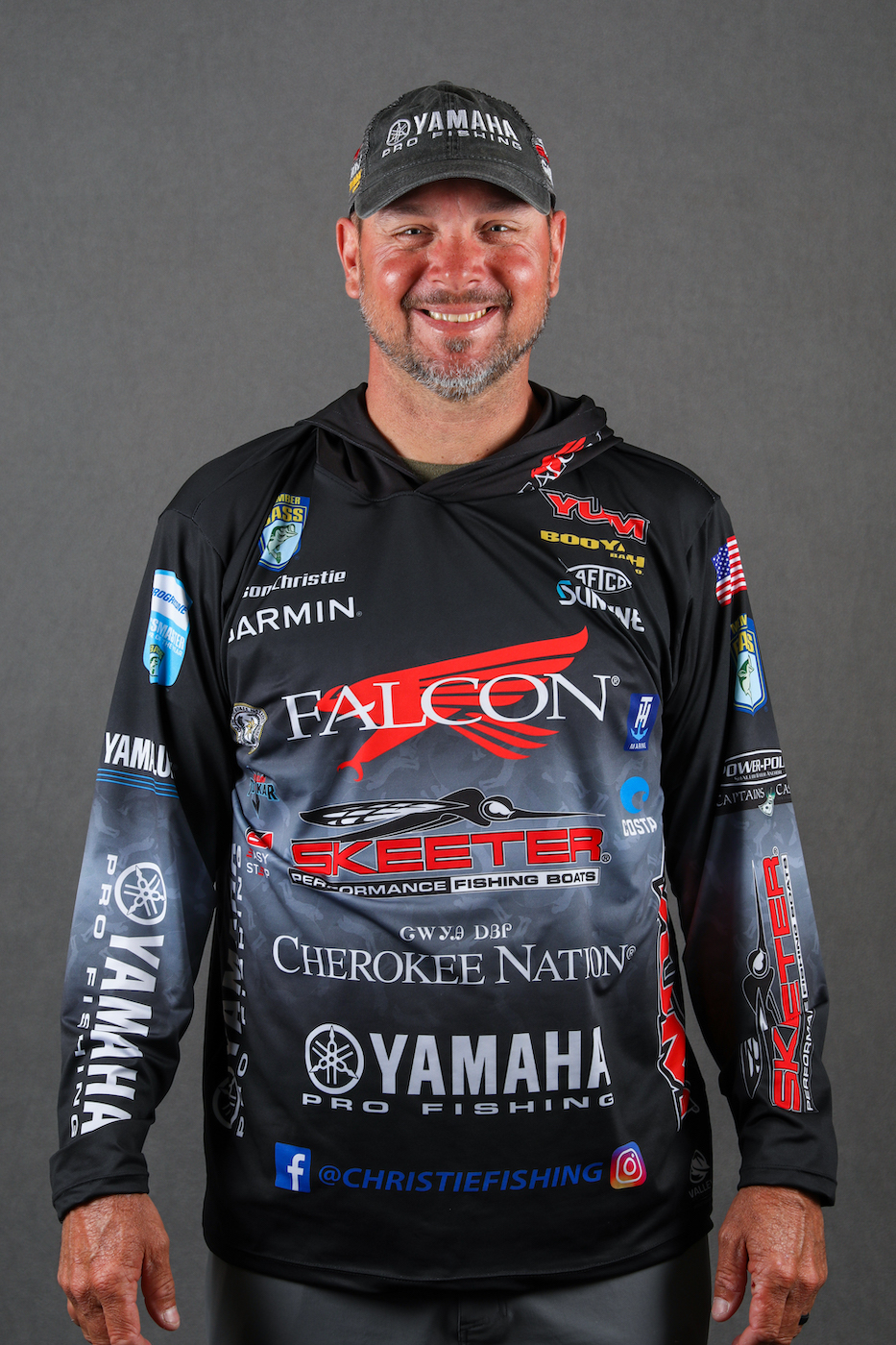My home state of Oklahoma saw one of the rainiest holiday weekends I’ve ever experienced. The rain started the Saturday after Christmas and it continued nonstop as hard as it could until Monday morning.
The Illinois River, which feeds Tenkiller Lake, reached a record level and it’s not done. All the lakes are full, and it’s tough to say what’s going to happen.
I went across a bridge on Monday, and I’ve never seen current ripping on Tenkiller like that before. There was a dock floating down the lake and there was a boat out there trying to retrieve it.
I was on Grand Lake looking around for the Classic when the head of the storm first hit. It was probably one of the top three or four times I’ve ever been scared. We made it in, but with the lightning, the wind and the drop in temperature, I was nervous all the way back to the boat ramp.
What’s aggravating for me is that this rising water is going to nullify most of the time I spent on Grand. It’s all going to be new to me.
We fish a lot in the winter, but I can’t remember fishing in the winter when the lakes are way, way high. Tenkiller is going to be 30-35 feet higher than normal, so you’re talking about putting 30-plus feet of water on top of where the normal bank is.
We’ve fished with the lake’s 4-5 feet high, but we just hardly ever get floods in the wintertime. Hopefully these extreme conditions that have also occurred in other states won’t last long. But even in times of moderate water rising, you have to be ready to adjust with the conditions.
Each lake will have its particular variables, but generally speaking, you need to look at two main factors, clarity and temperature.
Clarity
Any time of year, you want to shy away from the solid mud, but that’s especially true in the wintertime. A lot of times, when a river floods, the water authority will hold the lake and half of it will be clear.
But in situations of severe flooding like Oklahoma and other states are experiencing, the water comes up so fast that they’re opening the gates and flushing the water down. So the backs of the creeks are blown out, the whole lake’s blown out and that just makes most of the lake unfishable.
The best thing you can do is wait a few days and allow time for that mud to get out of the system. Once that happens, you just have to put in the time to hunt for some cleaner water.
The fish still have to eat and the good thing is that when a lake floods like this, the general population of fish —the crappie, shad, everything —will, for the most part, all do the same thing. So, if you’re not seeing bass, look for other fish on your graph. When you find that stuff, the bass are going to be right along there somewhere.
The fish will follow the bait wherever it goes, and if the water gets really dirty, at least some of those fish will have to move up shallow to eat.
Also, when the water’s cold, the fish are going to get up shallow to sun. That dirty water gives them a chance to get up there really shallow during the day.
Temperature
If you have a warm rain, you can expect the fishing to pick up, but if you’ve had cold rain, the rising water will have the opposite effect.
Even in stable conditions, the fish don’t move as quickly, and I think that in the winter, they feed more by sight than any other time. You want them to see your bait, but it’s hard when the lake doesn’t have much visibility.
The worst deal for winter bass fishing is muddy, cold water. Keep this in mind, and if you have a cold rain that muddies up the creeks and the shallow banks, you’ll want to leave these areas alone for a while and let the conditions stabilize.
As far as baits for rising water, I’d go with these:
1/2-ounce Booyah Spinnerbait: It puts off a lot of vibration and it’s something you can slow down. I’d use tandem Colorado blades and use a trailer with a lot of movement, like a Christie Craw.
1/2-ounce Booyah Jig: I want a jig with rattles and a big trailer like a YUM Chunk to move water.
Crankbait: I’d use a 5A or 6A Bomber, something you can bang into rocks and try to make a fish react. I like crankbaits with strong contrast, like red or black/red.
The whole thing in wintertime is it’s going to be harder to get a bite, so it’s going to be harder to locate fish. Under normal circumstances, a little color in the water will make the fish move shallow and get aggressive.
But rising water in the wintertime can be tough. The fish are lethargic anyway, so it’s hard to cover a lot of water and feel like you can get a bite.
If the water’s dirty in the wintertime, you want the fish to notice your bait by feel. That’s why you want to throwing baits with a big profile, something that’ll move some water, put off some vibrations or sound and give those fish a target to locate.

